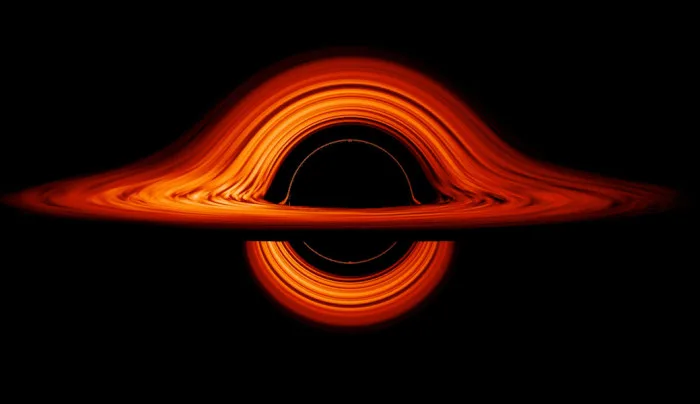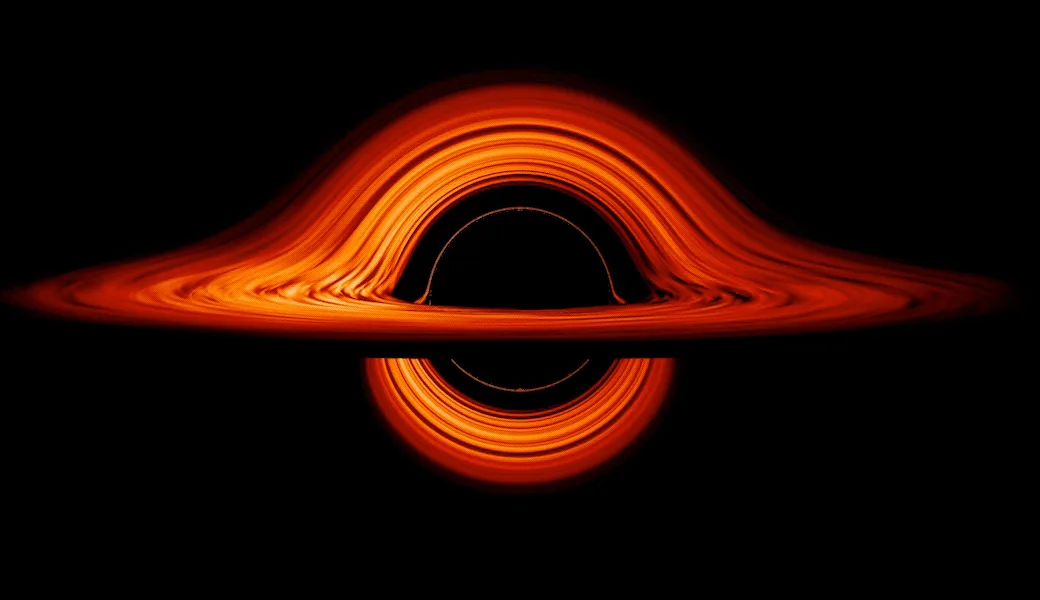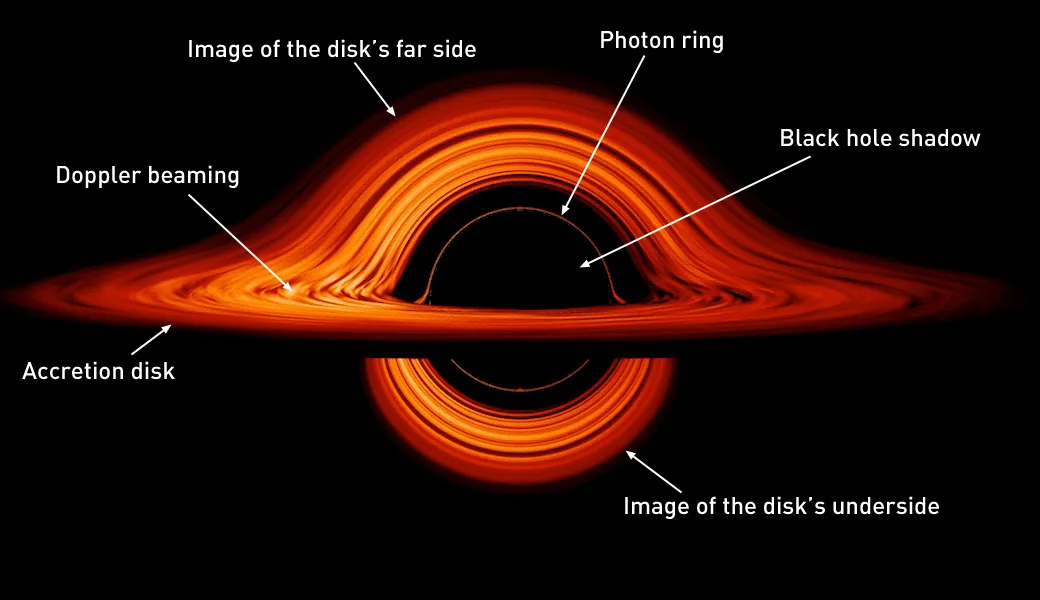
Mind-bending black hole simulation appears to defy reality
Black holes are among the most extreme objects in our universe
Just this week, astronomers with NASA announced an amazing discovery - a black hole in the beginning stages of tearing apart a unlucky star.
To accompany this discovery, the space agency released a truly mind-bending simulation of what a massive black hole would look like, if we were able to observe it from up close.
As seen in the video at the top of this story, the glowing ring of matter - the 'accretion disk' - is actually a flat disk of material swirling around the edges of the black hole.
In the image below, however, something very strange appears to be going on, to cause the ring to bend back upon itself.

Seen nearly edge-on, the black hole's 'accretion disk' takes on a "crazy double-humped appearance". Credit: NASA's Goddard Space Flight Center/Jeremy Schnittman
The 'something strange' causing this is the intense gravitational pull of the black hole, itself.
A black hole is formed when an immense star, many times more massive than our Sun, expends the last of its stellar fuel. At this point, the crushing weight of the entire mass of the star immediately collapses in on itself, squeezing down into a point so small, astronomers call it a 'singularity'. Often, this is accompanied by a tremendous explosion, known as a supernova, which can outshine all the stars in the galaxy for a short time.
Matter nearby the black hole, either originally thrown off of the star as it exploded, or drawn in at a later date from interstellar gas or an unfortunate passing star, can accumulate around the black hole in a glowing ring. This is known as an accretion disk.
Although the singularity occupies an extremely tiny space, it still retains most of the mass of the original star, and thus it has roughly the same gravitational pull. Compacted down into such a small space, this intense gravity produces an environment where not even light can escape, once it gets too close. Additionally, the very fabric of spacetime around the black hole is warped to the point where it produces a spherical 'gravitational lens', that bends light around the black hole.
In the image, we are viewing the accretion disk nearly edge on. Therefore, from our perspective, part of the disk is therefore behind the black hole.
If this were any other object, we probably wouldn't be able to see the far side of the disk. The object - nebula, star, planet, whatever - would block our view of it.
The gravitational lens produced by the black hole is so powerful, though, that it bends the light from the far side of the disk so much so that we never lose sight of the entire disk, no matter what angle we view it!

This labelled version of the image identifies the various features of the black hole and its accretion disk. Credit: NASA's Goddard Space Flight Center/Jeremy Schnittman/Scott Sutherland
So, as the labelled version of the image shows us, we not only see the near side of the disk, but as the matter spirals around to the far side, the gravitational lens bends the light emitted by that matter, so that it appears to us as though the far side is curving above the black hole's shadow.
Remarkably, due to the same lensing effect, we also see the underside of the disk's far side, as it appears to curve down below the black hole. In the image, the outer edge of the accretion disk, which is composed of matter that is not yet glowing, blocks part of the light that is bending around the bottom of the black hole.
According to NASA, 'doppler beaming' refers to light from the side of the accretion disk that is flowing towards us (on the left) appearing brighter than the light from the side that is flowing away from us (on the right). The 'photon ring' is light from the disk that has been bent around the gravitational lens multiple times before it escapes.
"Simulations and movies like these really help us visualize what Einstein meant when he said that gravity warps the fabric of space and time," said Jeremy Schnittman, who produced this visualization using custom software at NASA’s Goddard Space Flight Center. "Until very recently, these visualizations were limited to our imagination and computer programs. I never thought that it would be possible to see a real black hole."
Source: NASA
